
Current Affairs is the most important area in all competitive exams. But the difficulty level is very high. That’s why; many aspirants get confused, how to select Current Affairs for Preparation of Competitive Examination? In this Post, Daily Current Affairs 24 August 2021, we have tried to cover each and every point and also included all important facts from National/ International news that are useful for upcoming competitive examinations such as UPSC, SSC, Railway, State Govt. etc.
Daily Current Affairs 24 August 2021
Dharmendra Pradhan launched major initiatives of National Education Policy 2020

Union Education Minister Dharmendra Pradhan recently launched major initiatives of National Education Policy (NEP) 2020.
The Minister also unveiled a booklet on one-year achievements of the NEP Implementation prepared by the Department of School Education and Literacy of the Ministry to commemorate one year of the implementation of NEP-2020.
The initiatives launched by Mr Pradhan include, the National Initiative for Proficiency in Reading with Understanding and Numeracy (NIPUN) Bharat FLN tools.
The Education Minister also inaugurated resources on DIKSHA and virtual school on National Institute of Open Schooling (NIOS) for providing advanced digital learning platforms through Virtual Live Classrooms and Virtual Labs.
INS Shivalik and Kadmatt to Participate in Multilateral Maritime Ex Malabar

Indian Navy Ships Shivalik and Kadmatt arrived at Guam to Participate in Multilateral Maritime Exercise Malabar.
The two ships are scheduled to participate in the annual Exercise MALABAR-21, between navies of Australia, India, Japan and the USA.
MALABAR series of maritime exercises commenced in 1992 as a bilateral IN-USN exercise and has grown in stature over the years to include four prominent navies in the Pacific and Indian Ocean Region.
Exercise MALABAR-21 will be conducted with USN, JMSDF and RAN at sea from 26-29 Aug 21.
1183 mobilisation camps organised across the country under DDU-GKY
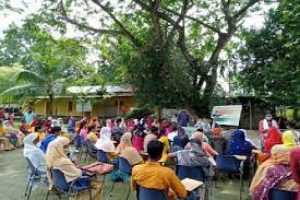
1183 mobilisation camps organised across the country under the Deen Dayal Upadhyaya Grameen Kaushalya Yojana (DDU-GKY) as part of Azadi Ka Amrit Mahotsav.
Deen Dayal Upadhyaya Grameen Kaushalya Yojana (DDU-GKY) launched on the 25th September, 2014, is a nationwide placement-linked skill training program funded by the Ministry of Rural Development (MoRD), Government of India (GoI).
DDUGKY seeks to build the placement-linked skills of the poor rural youth and place them in wage employment across various sectors of the economy. The programme has an outcome led design with guaranteed placements for at least 70% trained candidates.
The DDU-GKY programme is being implemented in 27 states and 3 UTs for rural poor youth with an emphasis on placements. More than 871 Project Implementation Agencies (PIAs) are training rural poor youth in close to 611- job roles through more than 2381 training centers.
Which countries are taking in Afghan refugees?
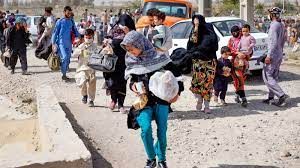
The Taliban’s takeover of Kabul on August 15 prompted hundreds of Afghans to rush to the Hamid Karzai International Airport in a bid to flee the Islamic militant organisation’s impending rule.
A refugee is defined as a person who has been forced “to flee his or her country because of persecution, war or violence. War and ethnic, tribal and religious violence are leading causes of refugees fleeing their countries,” as per UNHCR.
Overall, at the end of 2020, 82.4 million people were displaced worldwide because of persecution, conflict, violence and human rights violations. In terms of intake, Turkey hosts the most number of refugees (mostly from Syria) at over 4 million.
A total of 68 percent of people displaced across borders belong to five countries — Syria, Venezuela, Afghanistan, South Sudan and Myanmar.
As of 2020, there are about 2.8 million Afghan refugees abroad. The highest number of refugees living abroad belong to Syria, at 6.8 million, according to UNHCR.
On August 2, 2021, the US Department of State announced the Priority 2 (P-2) designation which grants US Refugee Admissions Program (USRAP) access to certain Afghan nationals and their eligible family members.
Provisions of Gujarat anti-conversion law that HC has stayed for now
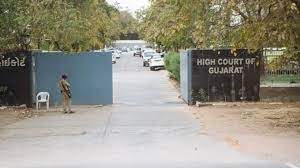
The Gujarat High Court stayed key provisions of The Gujarat Freedom of Religion (Amendment) Act, 2021 pertaining to marriages involving religious conversion of either of the two parties.
The Gujarat Freedom of Religion (Amendment) Act, 2021 amended the 2003 Gujarat Freedom of Religion Act.
The laws ostensibly seek to end conversion through unlawful means, specifically prohibit any conversion for marriage, even if it is with the consent of the individual except when prior sanction is obtained from the state.
Apart from UP and Gujarat, Madhya Pradesh and Himachal Pradesh too, have also enacted similar laws.
The new anti-conversion laws
- shift the burden of proof of a lawful religious conversion from the converted to his/her partner;
- define “allurement” for religious conversion in vague, over-broad terms;
- prescribe different jail terms based on gender; and
- legitimate the intrusion of family and the society at large to oppose inter-faith marriages.
They also give powers to the state to conduct a police inquiry to verify the intentions of the parties to convert for the purposes of marriage.
Swarnim Vijay Varsh celebration at Indira Point in Andaman & Nicobar Islands

The ‘Swarnim Vijay’ Victory Flame, commemorating the 50th anniversary of India’s victory over Pakistan in the 1971 war, reached the Indira Point, the southernmost tip of the country.
Indira Point, southernmost point of India’s territory, is a village in the Nicobar district at Great Nicobar Island of Andaman and Nicobar Islands in India. It is located in the Great Nicobar tehsil.
The point was formerly known as Pygmalion Point and Parsons Point.
This village was named Indira Point after former Prime Minister Indira Gandhi visited the local light house on 19 February 1984. The official renaming ceremony happened on 10 October 1985.
Galathea National Park and Lighthouse are the major attractions here.
Multi-storeys built with thermocol could be quake-resistant buildings of future
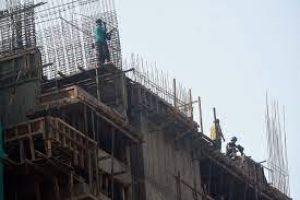
Thermocol could be the material of the future for construction of earthquake-resistant buildings, with thermal insulation and could also save energy required to develop construction materials.
Researchers at IIT Roorkee have found that thermocol or Expanded Polystyrene (EPS) is used as a composite material in core of reinforced concrete sandwich, could resist earthquake forces on up to four-storey buildings.
They have attributed this earthquake resistance capability to the fact that the EPS layer is sandwiched between two layers of concrete having reinforcement in the form of welded wire mesh.
The researchers said that the force being applied on a building during an earthquake arises due to the inertia effect and hence depends on the mass of the building. Thermocol resists earthquakes by reducing the mass of the building.
In this technique, the EPS core and the wire mesh reinforcement is produced in a factory. The building skeleton is first erected from the factory-made core and reinforcement panels, and then concrete is sprayed on the skeleton core.
This technique does not require any shuttering and hence can be constructed very fast.
Oil & Gas companies are exploring green energy options

State-owned Oil and Natural Gas Corporation is considering inorganic investments to reach a target of 10 GW of installed renewable energy capacity by 2040. Other oil and gas PSUs are also investing in renewable energy.
Global moves to reduce carbon emissions to slow down climate change have led to oil and gas companies around the world investing in renewable energy to reduce their carbon footprint and diversify offerings.
India is targeting 450 GW of installed renewable energy capacity by 2030 up from about 100 GW currently.
India’s largest upstream oil and gas company, ONGC, is targeting 10 GW of renewable energy capacity by 2040, up from 178MW of renewable energy capacity at the end of FY20.
Kanal Istanbul is fast gaining prominence as a major divisive issue in Turkey
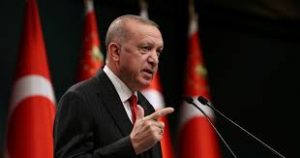
The Kanal Istanbul, an under-construction shipping route running parallel to the strategically critical Bosphorus Strait, is fast gaining prominence as a major divisive issue in Turkey.
President Recep Tayyib Erdogan wants to dig up a new route through Istanbul connecting the Black Sea and the Sea of Marmara.
The planned canal will run parallel to the Bosphorus Strait, a natural waterway that separates Europe and Asia, which for centuries has served as a key outlet for Russian ships entering the Mediterranean Sea.
Since 1936, passage through the Strait has been governed by the Montreux Convention, a multilateral treaty that allows ships to go across almost free of cost during peacetime, and which tightly restricts the movement of naval vessels.
Turkish leaders say that the new canal, which will run on the European side of Bosphorus, will be safer and faster to navigate compared to the Bosphorus, making it a more attractive option for commercial ships, who will pay to pass through.
Analysts also believe that Erdogan would use the canal to circumvent Montreux Convention, by marketing the mega project to NATO allies as a legally kosher way of sending their warships into the Black Sea to counter Russia, their major geopolitical rival, all while attracting Chinese investment.
Committee for doubling the production, quadrupling exports of handlooms

The Government of India has constituted a Committee for doubling the production and quadrupling the exports of handlooms in a span of three years.
It will be headed by Chairman of Fashion Design Council of India Sunil Sethi.
The committee will submit the final report within 45 days from the day of constitution.
It will suggest the strategy and policy framework for doubling the production and for improving the quality of handloom products with the aim of enhancing income of the weavers.
It will also suggest ways for partnering and collaboration of handloom weavers agencies with the designers, buying houses and institutions, organizations and exporters.
First commercial flight lands in Arunachal Pradesh’s Tezu
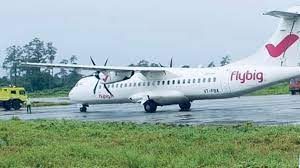
Scripting history in the country’s aviation sector, the first commercial flight landed on the easternmost tip in Indian landmass, Tezu in Lohit district of Arunachal Pradesh.
Tezu’s inclusion on the country’s aviation map is projected to enhance tourism in the Arunachal Pradesh.
CM Pema Khandu said that Tezu is the seventh domestic destination in the North East under UDAN, giving a boost to regional connectivity as envisioned by PM Narendra Modi.
With Guwahati – Tezu route, flybig has provided air connectivity in 10 out of 16 routes in the region under the UDAN-RCS scheme. Flybig will operate on this route with a frequency of four flights each week.
India’s highest herbal park inaugurated near Indo-China border
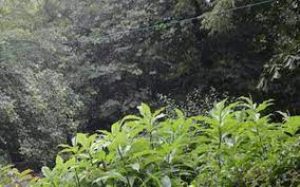
India’s highest altitude herbal park was inaugurated at Mana village close to the Indo-China border in Uttarakhand’s Chamoli district. The herbal park is situated at a height of 11,000 feet.
Mana village in Uttarakhand is the last Indian village in Chamoli bordering China and is adjacent to the famous Himalayan Temple of Badrinath.
The herbal park near the Indo-China border has around 40 species that are found in high-altitude alpine areas in the Himalayan region.
As per the International Union for Conservation of Nature (IUCN) and the State biodiversity Board, many of the species in the Herbal Park are endangered and threatened. It includes many significant medicinal herbs also.
Shaili Singh won silver at U20 World Athletics Championships

India’s Shaili Singh recently won the silver in women’s long jump at U20 World Athletics Championships in Nairobi.
18-year-old Maja Askag of Sweden won the gold with a jump of 6.60m, one cm better than the Indian’s effort in a pulsating final.
Shaili Singh is an Indian athlete who competes in long jump events. She is the junior Indian national long jump champion in age group categories and ranks among world’s top 20 long jumpers in the Under-18 category.
She holds the national record for long jump in the Under-18 category. She is trained by veteran Indian long jumper Anju Bobby George and her husband Robert Bobby George.
First Smog Tower of India inaugurated in Delhi
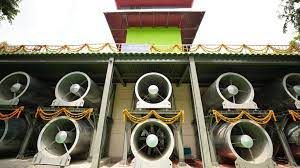
Delhi government has inaugurated the “country’s first smog tower” at Connaught Place in Delhi, one of the most polluted cities in the world.
The 24-metre-high smog tower at Connaught Place, one of the biggest commercial centres in the capital, is based on a downdraft air-flow model.
A smog tower is a structure designed to work as a large-scale air purifier, fitted with multiple layers of filters which trap fine dust particles suspended in the air as it passes through them.
Air is drawn through fans installed at the top of the tower, passed through filters, and then released near the ground.
In November 2019, an expert panel estimated that Delhi will need a total of 213 anti-smog towers to battle the pollution crisis. On 3 January, Delhi’s first smog tower came up at the Lajpat Nagar Central Market.
India emerged as 2nd most sought after manufacturing destination

According to Cushman and Wakefield’s 2021 Global Manufacturing Risk Index, India has surpassed the US as the world’s second most desired manufacturing hub.
The rising focus on India can be attributed to India’s operating conditions and cost competitiveness.
The sector’s gross value added (GVA) at current prices was estimated at US$ 348.53 billion as per the second advanced estimates of FY21.
The IHS Markit India Manufacturing Purchasing Managers Index (PMI) reached 55.5 in April 2021 from 55.4 in March 2021. The manufacturing GVA accounts for 19% of the country’s real gross value added.
As per the latest survey, capacity utilisation in India’s manufacturing sector stood at 66.6% in the third quarter of FY21. The manufacturing component of the IIP stood at 116.9 between April 2020 and March 2021.





